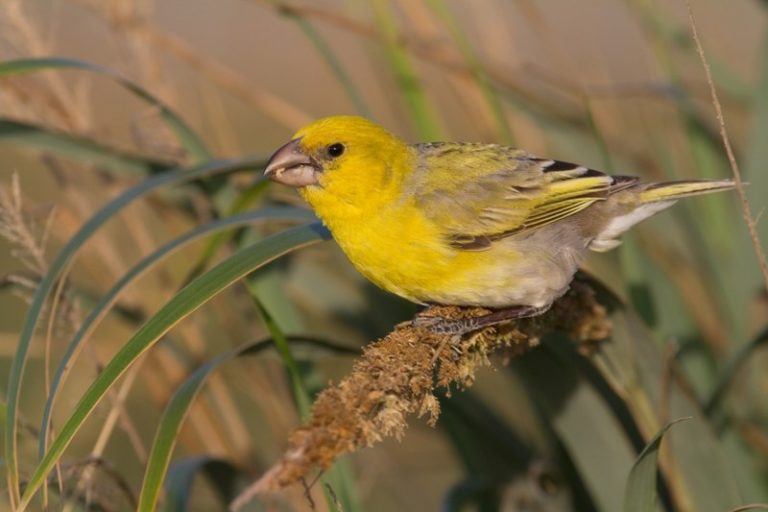Birdfinding.info ⇒ Common and conspicuous in its tiny range: Laysan and the Pearl and Hermes landmasses known as Bird Island and Southeast Island. These three mid-oceanic islands are extremely remote and rarely receive human visitors except government employees during work assignments.
Laysan Finch
Telespiza cantans
Endemic to Laysan Island in the Northwest Chain of Hawaii; introduced to Pearl and Hermes Atoll (approximately 400 miles west-northwest of Laysan).
An introduced population existed on Midway Atoll from 1905 to 1945, and was estimated at around 5,000 from 1922 to 1941. They disappeared soon after the introduction of Norway Rats to Midway.
The Laysan Island population dropped to approximately two to three dozen birds during the period 1916-23, when introduced European Hares consumed most of the island’s vegetation, but a few survived by eating dead seabirds and eggs, then rebounded after the hares were eradicated, and by 1938 had recovered to about 1,000.
Population estimates in the late 1900s and early 2000s have fluctuated between 7,000 and 20,000 on Laysan and from 108 to 876 on Pearl and Hermes Atoll, averaging about 10,000 and 400, respectively.
Identification
A large, heavy-billed, grosbeak-like finch.
Male has mostly golden-yellow head and breast, and otherwise gray with yellow highlights on the wings, back, and tail.
Females resemble males—more so as they age—but are somewhat duller yellow and more streaked.
Immatures are generally grayish with heavy dark streaks on the upperparts, faint or fine streaks elsewhere, and some yellowish stains and patches on the head, breast, back, wings, and tail.
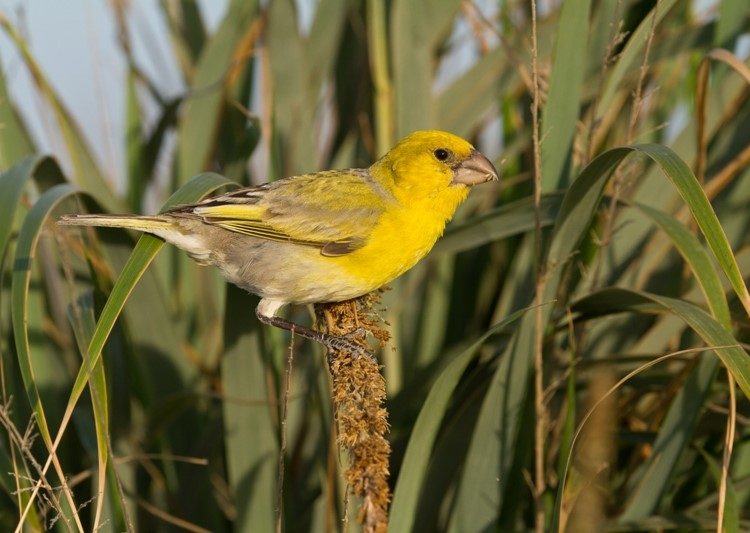
Laysan Finch, male. (Laysan Island, Hawaii.) © Robby Kohley
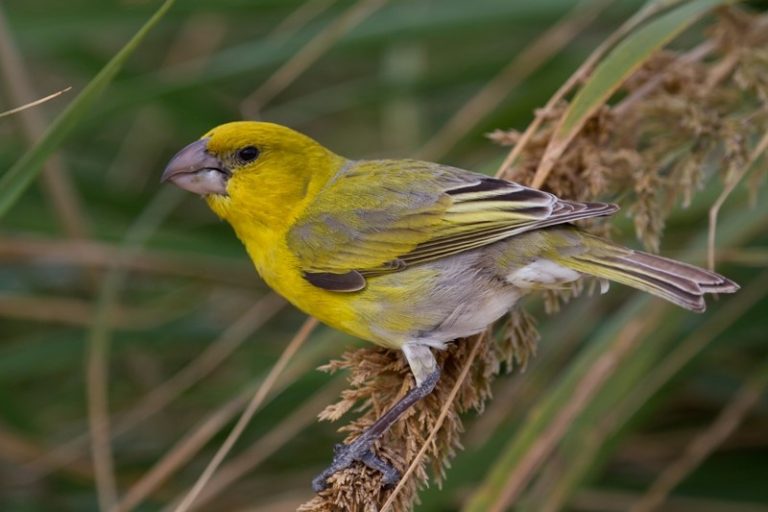
Laysan Finch, male. (Laysan Island, Hawaii.) © Robby Kohley
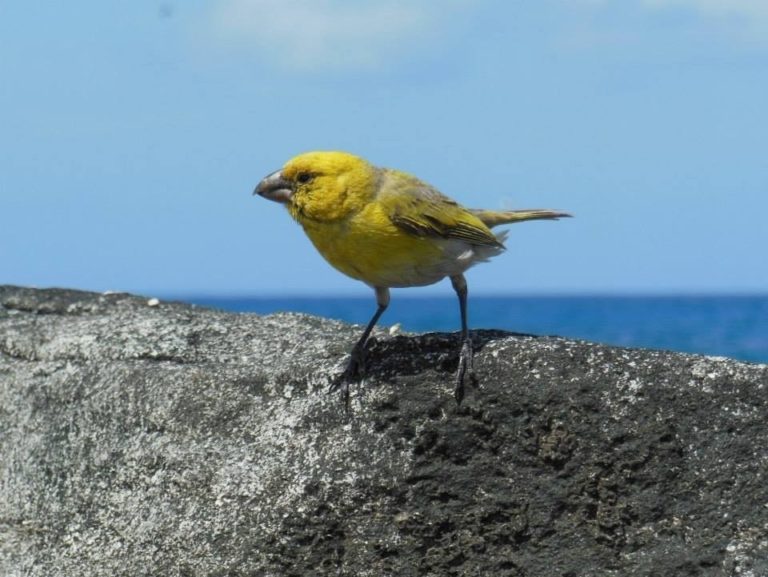
Laysan Finch, male. (Laysan Island, Hawaii; May 12, 2013.) © Andy Bridges
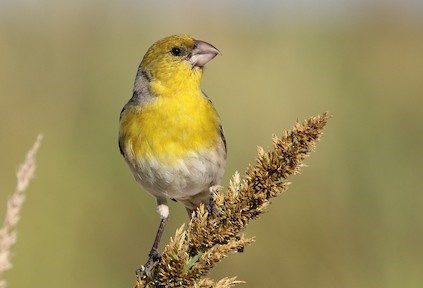
Laysan Finch, male. (Laysan Island, Hawaii; January 25, 2012.) © Cameron Rutt

Laysan Finch, two females or immatures and one male (at right). (Laysan Island, Hawaii; September 15, 2013.) © Forest & Kim Starr

Laysan Finch, female. (Laysan Island, Hawaii; October 9, 2012.) © Robby Kohley
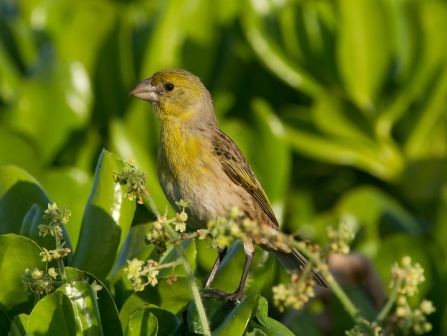
Laysan Finch, female. (Laysan Island, Hawaii; February 29, 2012.) © Robby Kohley

Laysan Finch, immature. (Laysan Island, Hawaii; January 3, 2012.) © Cameron Rutt

Laysan Finch, immature. (Laysan Island, Hawaii; August 21, 2012.) Dr. Dwayne Meadows, NOAA
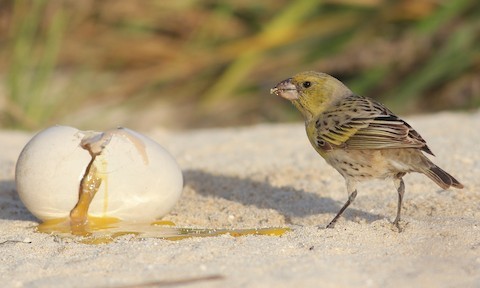
Laysan Finch, female or immature beside a broken albatross egg. (Laysan Island, Hawaii; January 3, 2012.) © Cameron Rutt
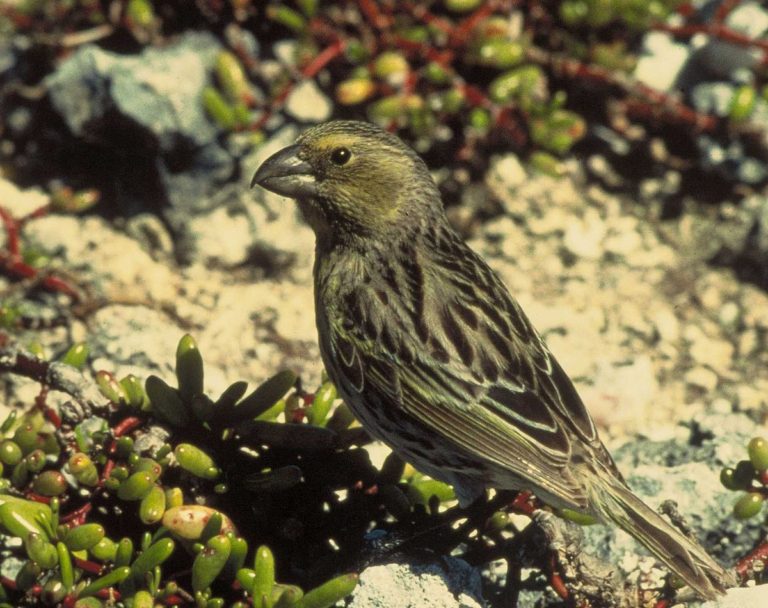
Laysan Finch, immature. (Laysan Island, Hawaii.) U.S. Fish & Wildlife Service
Notes
Monotypic species.
IUCN Red List Status: Vulnerable.
References
BirdLife International. 2018. Telespiza cantans. The IUCN Red List of Threatened Species 2018: e.T22720728A131886478. https://dx.doi.org/10.2305/IUCN.UK.2018-2.RLTS.T22720728A131886478.en. (Accessed May 29, 2020.)
eBird. 2020. eBird: An online database of bird distribution and abundance. Cornell Lab of Ornithology, Ithaca, N.Y. http://www.ebird.org. (Accessed May 29, 2020.)
Pratt, H.D. 2005. The Hawaiian Honeycreepers: Drepanidinae. Oxford University Press.
Pratt, H.D., and E. de Juana. 2020. Laysan Finch (Telespiza cantans). In Handbook of the Birds of the World Alive (J. del Hoyo, A. Elliott, J. Sargatal, D.A. Christie, and E. de Juana, eds.). Lynx Edicions, Barcelona. https://www.hbw.com/node/61433. (Accessed May 9, 2020.)
Pyle, R.L., and P. Pyle. 2017. The Birds of the Hawaiian Islands: Occurrence, History, Distribution, and Status. Version 2 (January 1, 2017). http://hbs.bishopmuseum.org/birds/rlp-monograph/. B.P. Bishop Museum, Honolulu, Hawaii.
